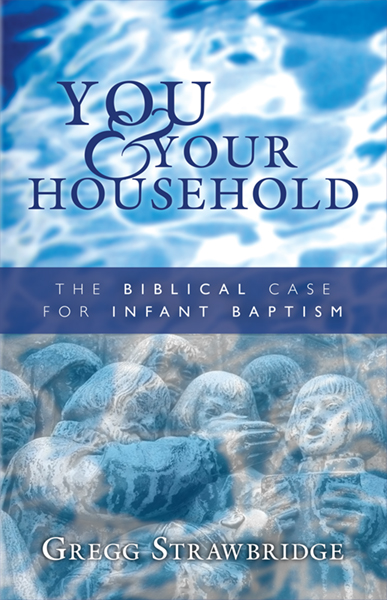Introduction:
Have you ever pondered the majestic imagery in the Psalms, where God is depicted with “wings” sheltering His people, or the powerful depiction in Exodus of God’s “mighty hand” delivering the Israelites from Egypt? These vivid descriptions captivate our imagination, drawing us into a deeper understanding of the Almighty. Yet, this kind of language also raises an intriguing question: How can the infinite God, who transcends physical form, be portrayed with human-like or bird-like features? This enigma brings us to the doorstep of a profound theological concept in Scripture called anthropomorphisms. These literary devices are more than mere poetic expressions; they are bridges connecting the human tactile and material experience with the vastness of the metaphysical and transcendent God.
Defining Anthropomorphism:
Anthropomorphism, in its essence, is the Biblical attribution of human traits, emotions, or physical characteristics to the description of the infinite God as a way for finite creatures to understand Him. While indeed paradoxical, this concept does not conflict with a proper understanding of Yahweh, as described in John 4:24, which teaches us that He lacks a physical body and transcends human comprehension. Instead, it is a literary tool that God employs to convey His actions and attributes to fallible man in a relatable and understandable manner to His creation. It’s a theological bridge, helping us cross the chasm between our limited perception and the boundless reality of God.
Scriptural Examples:
In its rich and varied narrative, the Bible frequently employs anthropomorphic language to describe God, allowing believers to relate to the divine in more familiar terms. This use of human-like imagery is not an attempt to define God in human terms but rather a way to make the nature and actions of the infinite God comprehensible to our finite minds.
Imagine standing at the edge of the Red Sea, feeling the formidable power of God as described in Exodus 15:8, where His might is likened to the “blast of His nostrils” parting the waters. It’s a vivid and awe-inspiring metaphor that paints a picture of divine intervention in a way that speaks to our senses. Then, consider how Isaiah 59:1 brings us closer to God’s nature, not by depicting Him with physical attributes but through the metaphor of a “hand” and an “ear” — symbols of His ability to act and His readiness to listen. This imagery stirs the soul, bridging the human and the divine gap.
Envision further: the “eyes of the Lord” roving across the earth in 2 Chronicles 16:9, a poignant reminder of His all-encompassing watchfulness, or the “arm of the Lord” in Isaiah 53:1, symbolizing a strength that reaches out to save. In Exodus 31:18, the “finger of God” is not a literal digit but a powerful metaphor for divine authorship, as God inscribes the Ten Commandments. Then, there’s the “face of God” mentioned in Genesis 32:30 — not a physical face but an expression of God’s manifest presence. The “voice of the Lord” echoes through Psalm 29:3, not as a sound we hear with our ears but as a declaration of His sovereign will that resonates in the heart.
These are not just poetic words; they are a language that speaks of the divine in terms we can grasp. They remind us that the limitations of human form or senses do not constrain God. His “ear” hears more than we can imagine, His “hand” works beyond the bounds of human capability, and His “breath,” as mentioned in Job 33:4, is the very essence of life itself. In Psalm 17:8, being hidden in “the shadow of Your wings” evokes a sense of divine protection and comfort, drawing us into the assurance of God’s encompassing care.
However, it’s vital to recognize that these anthropomorphic descriptions are not literal. For instance, attributing a physical hand or ear to God would paradoxically limit His omnipresence and omnipotence, confining the infinite to finite dimensions. Instead, these images are intended as metaphors, communicating real truth about God’s attributes and actions in a manner relatable to human beings. They reveal aspects of God’s nature—His power, care, protection, and attention—in ways that resonate with human experience and understanding.
The Bible’s symbolic use of anthropomorphic language bridges the gap between the divine and the human mind. It allows believers to develop a more personal and intimate understanding of God. When Scripture describes God with human characteristics, it invites us into a deeper relationship with Him, one where we can connect to His divine nature through our human experience. Therefore, these descriptions are not just poetic flourishes but are essential tools in helping us grasp the incomprehensible aspects of God’s nature, reminding us of His transcendence and immanence.
Historical Understanding:
The Early Church’s Interpretation:
The journey of understanding anthropomorphisms begins with the early church fathers, who played a pivotal role in shaping Christian thought. Among them, Augustine of Hippo stands out as a significant figure. Augustine grappled with the scriptures rich in anthropomorphic language and sought to interpret these descriptions in a way that aligned with the transcendent nature of God. In his work “De Trinitate” (On the Trinity), Augustine argued that such language was not a literal depiction of God’s nature but a means to make the divine mysteries accessible to the human intellect. He contended that these human-like descriptions were symbolic, communicating spiritual truths about God’s nature and actions in a way humans could relate to and understand. Augustine’s interpretations set a foundation for later theologians, emphasizing the importance of discerning the spiritual truth underneath the literal text.
Medieval Theology and Analogical Language:
The medieval period saw further development in the understanding of anthropomorphisms, particularly with the contributions of Thomas Aquinas. Aquinas, a towering figure in medieval scholasticism, expanded upon Augustine’s ideas, introducing the concept of analogical language. In his “Summa Theologica,” Aquinas argued that these descriptions are analogies when Scripture ascribes human attributes to God. They offer a comparative, yet not exact, understanding of God’s attributes. For Aquinas, anthropomorphic language was a way of speaking about God that was true to the extent that it affirmed God’s actions and qualities. Yet, it remained inherently limited and could not fully encapsulate His essence. This analogical approach acknowledges that while God’s ways are vastly different from ours, there is still a correspondence that allows us to speak honestly and accurately about Him, though certainly not exhaustively. Aquinas’s approach profoundly influenced subsequent theological thought, providing a nuanced framework for interpreting anthropomorphisms.
Reformation and the Language of Accommodation:
The Reformation era marked another significant milestone in understanding anthropomorphisms, with reformers like John Calvin offering insightful contributions. Calvin, known for his influential work “Institutes of the Christian Religion,” emphasized the idea of divine accommodation. He argued that the anthropomorphic language in Scripture was God’s way of stooping to our level of understanding. By using human terms and concepts, God was accommodating Himself to our limited human capacity, making His nature and will understandable to us. Calvin stressed that these descriptions were not to be taken as literal attributes of God but as metaphors that help humans grasp something of the divine mystery. This emphasis on accommodation reflected a deeper understanding of the gap between God’s infinite nature and our finite understanding, reinforcing that while Scripture speaks about God in human terms, these terms are merely a condescension to human limitations.
Application
Understanding God through anthropomorphic language isn’t just a theological exercise; it’s a transformative experience that profoundly impacts our faith and worship. When Scripture describes God in human terms, it does something remarkable—it brings the infinite within reach of our finite minds. For many Christians, God can seem distant and abstract, a vast entity far removed from the intricacies of our daily lives. However, when we read about God’s “hand” guiding, His “ear” listening, or His “eyes” watching over us, the Divine suddenly becomes more relatable, more intimate.
This intimacy is crucial, especially in our prayer and worship, which are inherently relational. Imagine the difference in your prayer life when you think of God not as a distant force but as a loving Father who listens attentively, a Shepherd who guides with care, or a Friend who understands your deepest needs. This isn’t about simplifying God but about deepening our connection to Him. It’s about finding comfort in the idea that God cares, loves, and interacts with us in ways we understand and respond to. This understanding fosters a stronger emotional bond with God, enhancing the richness of our spiritual experience.
On the other hand, anthropomorphisms do more than make God relatable; they also remind us of His majesty and our humble place before Him. When we realize that these human-like descriptions are mere metaphors, we begin to grasp the vastness of God’s true nature. This realization leads to a more profound reverence for God. It reminds us that while He can be known, He can never be fully comprehended. This balance between intimacy and awe is vital in our spiritual journey. It keeps us from becoming overly familiar with God, preserving His majesty and otherness while inviting us into a relationship with Him.
Furthermore, these anthropomorphic descriptions serve as powerful moral guides, but within the context of the Gospel, their role is understood in a deeper, grace-filled dimension. When we read about God’s “just hand” or His “listening ear,” we’re not just learning about who God is but also about who we are called to be in Christ. These metaphors become models for our behavior, yet this is not a call to moralism or self-reliance. As Christians, we recognize that true moral transformation is not about mechanically imitating God to earn His favor or salvation. Indeed, our efforts to emulate divine attributes like compassion, justice, attentiveness, and love — qualities that these anthropomorphisms beautifully illustrate — are not what justifies us before God.
The Gospel teaches us that we cannot achieve moral perfection on our own; our righteousness is like “filthy rags” (Isaiah 64:6) compared to God’s holiness. It is only through the life, death, and resurrection of Jesus Christ, who perfectly embodied all these divine attributes, that we find salvation and are declared righteous. This foundational truth reminds us that our growth in virtue is not a means to salvation but a response to the salvation already secured for us. We emulate God’s character not to impress Him or earn His approval but as a grateful response to the grace we have already received in Christ.
Furthermore, the empowering presence of the Holy Spirit in our lives is crucial to our spiritual growth. As we rest in the finished work of Christ, trusting in His righteousness and not our own, the Spirit works within us to conform us more to the image of Christ. This is the essence of sanctification — a process not of human striving but of divine transformation. The Spirit helps us to understand and apply these anthropomorphic descriptions in our lives, not as a legalistic checklist, but as a joyful pursuit of holiness rooted in the grace and love we’ve received from God.
Conclusion
In summary, anthropomorphisms in Scripture offer us valuable insights into God’s character and provide a model for Christian living, but they are always understood in the light of the Gospel. They are not a ladder to climb to reach God but signposts pointing us to the grace that is already ours in Christ, and they inspire us to live in a way that reflects our gratitude and understanding of this profound truth.
God bless you















